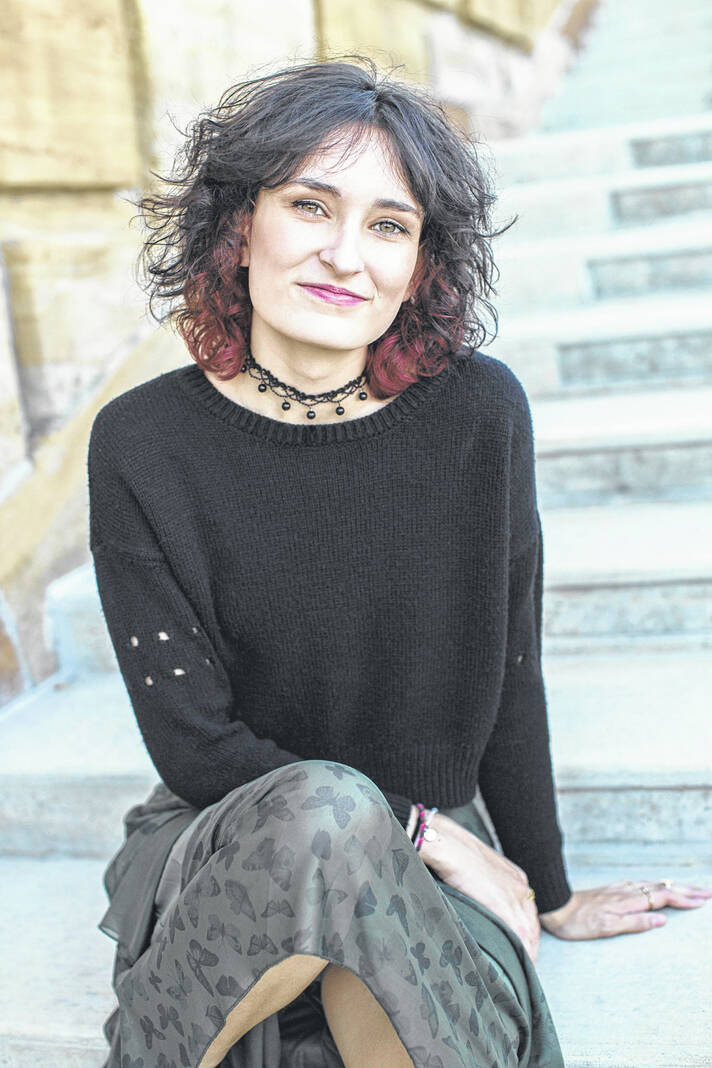
Palombi
By Vivian Blevins
Contributing columnist
On April 5, 2023, thousands of students walked out of classes in the U.S. to protest the failure of decisive action on the part of legislative bodies to pass legislation that would offer them some measure of protection in their schools, and two protestors were expelled from the Tennessee State Legislature for a protest in the House chambers calling for passage of gun-control measures.
You know, as do I, that the problem of persons taking up arms against Americans in places of worship, on the streets of our cities, in malls, at concerts, and in nightclubs is broad ranging and cannot be reduced by a single legislative action. My sense is that we need to approach gun violence piecemeal, doing what can be done in specific arenas.
Many of you know that I teach creative writing at my local community college and am teaching a fiction class this semester. AnnMarie Palombi is a high school senior from Troy, Ohio, enrolled in the College Credit Plus program at Edison State. Since she posted her first story on Blackboard, I have eagerly awaited her submissions as I know they will be exemplary. With a recent one, I gasped.
So, what did she post? “Ode to the American Student,” an account of a dystopian society fifteen years in the future in which we are inhabiting a world turned upside down with major injustices that are in sharp contrast to what many of us believe our communities should be.
She begins by detailing what schools were at one time: children “who used to laugh between classes as they jabbered away about prom. About football, about Dance Moms, about everything, about nothing” as “they would stomp their Converse, their Vans, their Birkenstocks, their Doc Martens through the hallways on their way from English composition classes to Algebra II.” And their “ruckus made a lovely harmony.”
She describes the classrooms of the time as places “filled with the fruits of learning, filled with teachers who cared, filled with students who didn’t always but could when it mattered” with class discussions remaining “a steady beat.” Those classrooms were led by caring teachers which “made for a sweet accompaniment to the song of life.”
And then there is a change. Travel to today’s classrooms with Palombi where the narrator describes children screaming “as the gunshots rang out against the hallways, against the doorframes, against the lockers, against skulls” and children ran through the hallways away from their classes as they screamed at their friends to “run faster, abandon their headphones in the classrooms, wrap their arms around each other, and try, try to hide,” and the ruckus created “was off-key.”
The narrator gives voice to one of the students who “used to smile, used to text, used to laugh like sunshine.” He also “used to be kind, funny, obnoxious, loud.” He was the one who covered the narrator’s body with his own and told her that it would be okay, that there was nothing to fear, and that the shooter would not come to the place where they were hiding. This boy, as she tells the readers, “used to be alive.”
Finally, the narrator describes the future in horrifying detail with empty hallways of a school, the floors “stained with dirt and mud and dried blood that wouldn’t be scrubbed away.” There are poster from proms 15 years earlier “still stapled to the cork boards, their big pink lettering splattered with red,” and in the abandoned building, “gunpowder sticks to the ceiling like skin.” The classrooms are littered with items students left behind as they fled: backpacks “half-zipped and stinking of rotting sandwiches.”
The narrator has escaped this area where she used to visit daily the graveyard where the friend who covered her body is now buried with a tombstone with “Thoughts and Prayers” etched on its surface. The school never reopened, was “deemed unsafe” as “it was impossible to pass laws to restrict the hunters…simply unfathomable.”
Now in that closed school, there is no one to shoot, and the prey is safe from the predator, and the predator is safe from justice.
Palombi concludes the story with the narrator declaring, “The children used to laugh. The classes used to be loud, and the teachers used to love They weren’t always prey. They weren’t always hunted. He wasn’t always dead. I wasn’t always gone. But the choice has been made.
“The anthem we sing will never be that beautiful harmony that ebbs and flows like the tide of humanity.
“We raise our hands and salute the flag and sing the song of children’s screams, of hushed whispers, of ‘I love you’ texts and silent tears, of prayers sent to a deaf God, of injustice. We sing that grating melody and care not for those empty halls and those hallowed gravestones and the things we lost.”
In conclusion, I ask the question: When will our legislators take action to reduce gun violence in schools and will your child or grandchild be next?
Vivian B. Blevins. Ph.D., teaches telecommunication employees from around the country and students at Edison State Community College and works with veterans. You may reach her at 937-778-3815 or [email protected].

